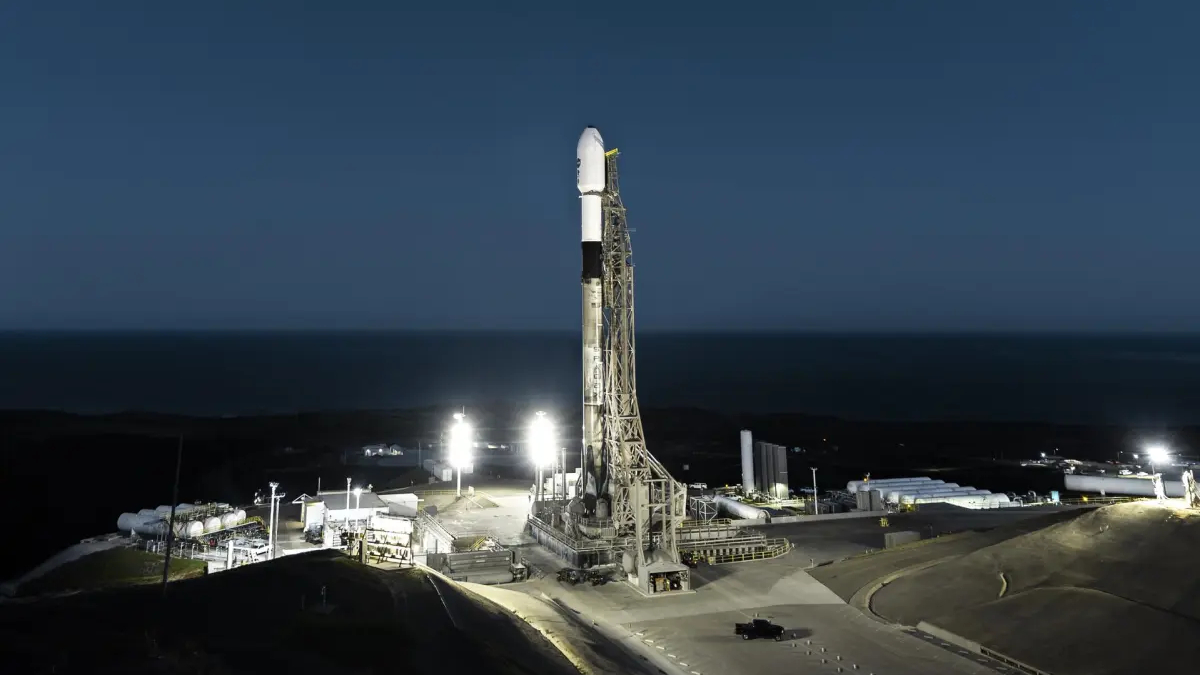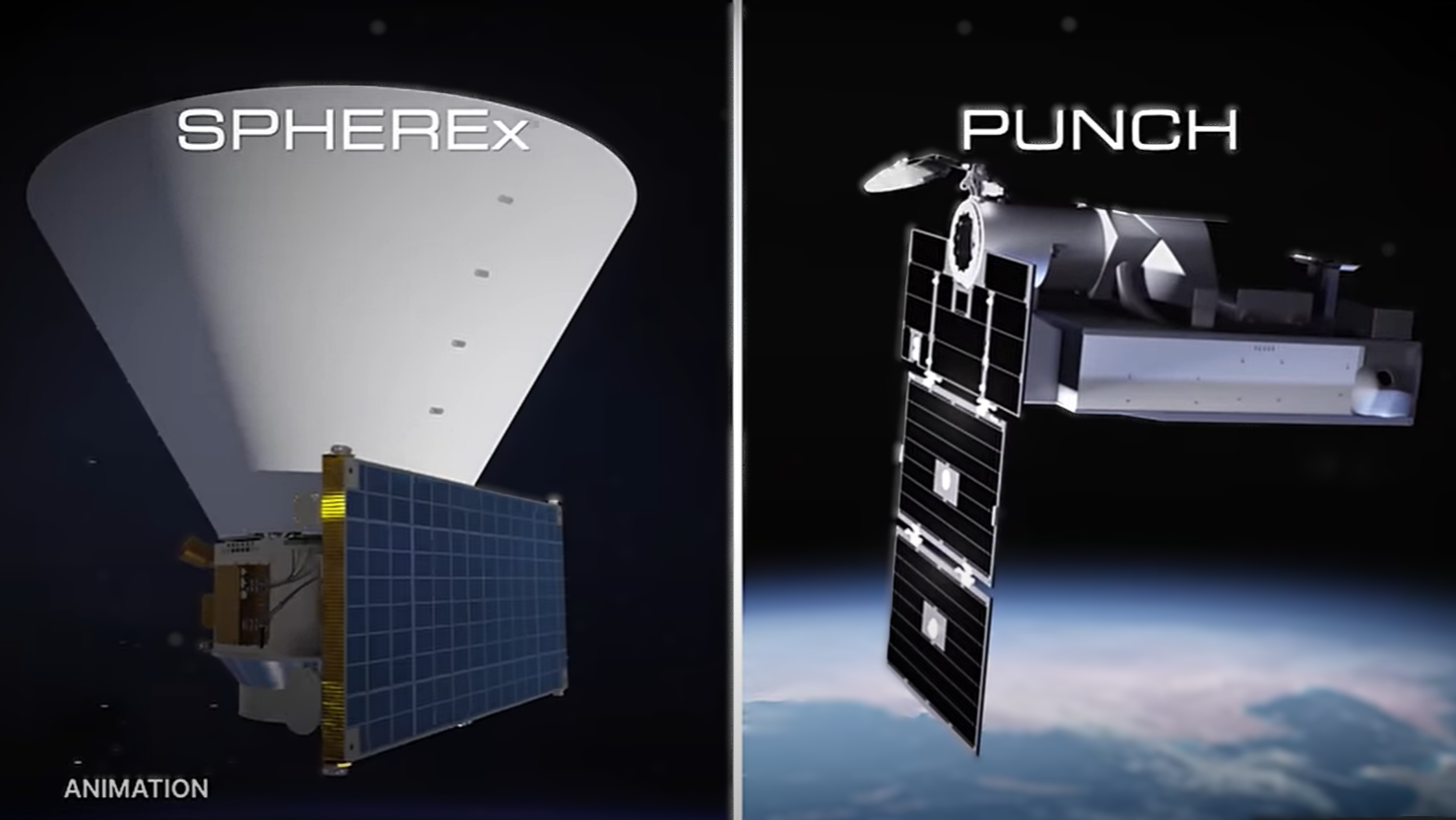Two NASA missions called "SPHEREx" and "PUNCH" could share a ride to space this evening (March 11) after multiple delays.
The agency had planned to launch both missions at the same time on Saturday (March 8) aboard a SpaceX Falcon 9 rocket, but SpaceX delayed the launch to complete vehicle checkouts. The next attempt, planned for March 10, was scrubbed due to poor weather and an undisclosed issue with one of the spacecraft.
SpaceX has now announced a new launch window starting at at 11:10 p.m. EDT on Tuesday, March 11 (0310 March 12 GMT). Liftoff will occur from Launch Complex 4E at Vandenberg Space Force Base in California. NASA has predicted a 40% chance of weather violation due to clouds, however. SpaceX has a backup opportunity at the same time on Wednesday (March 12) in case weather forces another delay.

SPHEREx — which stands for Spectro-Photometer for the History of the Universe, Epoch of Reionization and Ices Explorer — is a conical white spacecraft constructed to work as a sort of wide-angle version of the James Webb Space Telescope. It'll be working with information-rich infrared light wavelengths emanating from the distant universe just like the JWST does, but it will do so on a much wider scale.
The JWST can peer into the crevices of a faraway galaxy with remarkable resolution, for instance, while SPHEREx will be able to detect the other galaxies around the JWST's single target with its own stellar imaging capabilities.
Meanwhile, PUNCH — which stands for Polarimeter to Unify the Corona and Heliosphere — will be searching for secrets of solar dynamics. Made up of four satellites that'll be stationed around our planet, this mission is meant to help scientists understand how the sun's outer atmosphere, or corona, turns into the solar wind. This is important because the solar wind ricochets around the bubble our solar system sits within, known as the heliosphere; the edges of that bubble represent the barrier between our cosmic neighborhood and the rest of the universe.
Decoding how our sun operates in general can offer many benefits to humanity, but the most obvious probably has to do with space weather. Sometimes, for instance, bursts of plasma rip off the sun and turn into what are known as coronal mass ejections, or CMEs, that can barrel toward our planet. This happens relatively often, meaning a CME headed our direction doesn't mean we're in for doomsday, to be clear — but space weather resulting from such events can indeed affect things like our power grid and the health of astronauts in space.

While waiting for these missions to launch, if you'd like to read more about each of them, you can check out our detailed explanations about how they work here.
The science of SPHEREx, for instance, provokes intriguing questions, such as why cosmic inflation occurred just after time began and how water arrived on Earth to support life as we know it. PUNCH's work and observing techniques will also be incredibly interesting, delving into how the property of light called "polarization" can tell us about the directions of different features within our solar wind chamber (including CMEs) and the way an "artificial solar eclipse" will be instrumental in the mission's success.
Editor's Update: This article was updated on March 11 to reflect the latest launch information for this mission.







